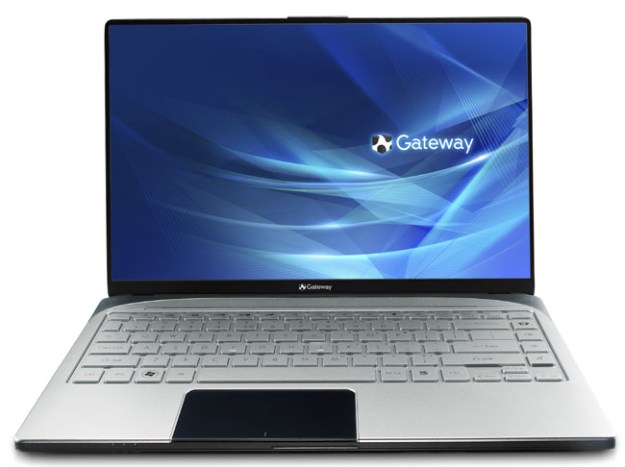
Summer seems like it has just started, but computer maker Gateway is already getting into the back-to-school spirit with some new entries in its ID- and NV-series of notebooks. Both series feature USB 3.0, HDMI output, dedicated social media tools, integrated DVD players, and one-button backup capabilities, but the ID series packs a 14-inch display into a chassis you’d expect on a 13.3-inch ultraportable, and the NV series feature 15.6-inch displays and second-generation Intel Core processors.
First up, the new ID47 and ID57 systems pack a 14-inch LED-backlit display into a compact design more akin to a 13.3-inch system, thanks to an edge-to-edge design. That said, Gateway put work into making the systems comfortable to use, with a full-sized keyboard and an edgeless trackpad that’s 20 percent larger than its predecessor, making for easy multitouch gestures. The new ID series feature second-generation Intel Core i5 processors running at 2.3 GHz, 4 to 8 GB of RAM, 500 to 750 GB of hard drive storage, and Intel HD Graphics. Also on board: an 8×DVD SuperMulti drive, HDMI output, 802.11b/g/n Wi-Fi, a 1.3 megapixel webcam, a digital media card reader, and Dolby Home Theater v4 audio enhancement. The systems also sport two USB 2.0 ports and a single USB 3.0 port that can also charge phones, cameras, and other devices even when the notebook is powered down.

Next up, Gateway’s new NV55 system sports an AMD Fusion Quad-Fore A8 processor running at 1.5Ghz (boosts to 2.4 GHz) along with a 1.5-6inch LED-backlit display powered by AMD Radeon HD 6620G graphics. The NV55 sports a 640 GB hard drive, 4 GB of RAM, an 8× SuperMulti DVD drive, 802.11b/g/n Wi-Fi networking, a 1.3 megapixel webcam, a separate numeric keypad, stereo speakers, and HDMI output. The systems also feature two USB ports, one USB 3.0 port (with the same charge-without-being-powered-on feature) and Gateway’s dedicated social network and backup keys.
The new Gateway ID and NV series are available at U.S retailers with suggested pricing starting at $699.99 and $529.99, respectively.
Interestingly, Gateway is producing two alternate versions of these systems for Canada. The Gateway ID57 notebook will feature a 15.6-inch display and Nvidia GeForce GT540M graphics with 2GB of video memory and Optimus technology to flip back and forth between integrated and discrete graphics: it’s available for a suggested price of CAN$899. Gateway is also offering Canadians an Intel Core i3-powered NV57 (with Intel HD Graphics 3000 and 128 MB of dedicated system memory) starting at CAN$549.


